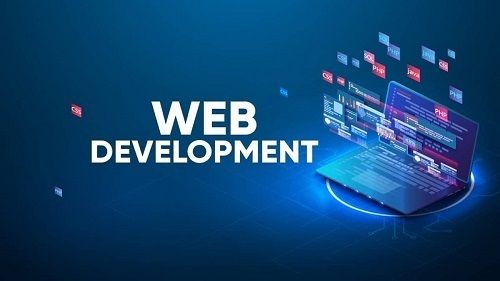The digital landscape is constantly evolving, and as we approach 2025, the pace of change in website development in San Antonio continues to accelerate. San Antonio, a city rich in history and culture, is also home to a rapidly growing tech ecosystem, making it an exciting hub for innovative web design in San Antonio. As businesses in the Alamo City seek to improve their online presence, five key trends are expected to dominate the industry in 2025. These trends reflect the need for more immersive, user-friendly, and performance-oriented web experiences.
- AI-Driven Personalization
Artificial intelligence (AI) is transforming the way websites are built and experienced. By 2025, AI-driven personalization will be a must-have for businesses in San Antonio web development looking to stand out in a crowded digital marketplace. Websites will leverage AI to deliver personalized content, product recommendations, and user experiences based on individual behaviors and preferences.
Machine learning algorithms will analyze user data to understand patterns in how visitors interact with websites, enabling businesses to optimize content delivery in real time. For example, e-commerce websites can personalize product suggestions based on browsing history and past purchases, improving conversion rates and user satisfaction.
For San Antonio website development businesses, especially in industries like retail, hospitality, and tourism, implementing AI-driven personalization could significantly enhance customer engagement. A restaurant in the city could tailor its online menu and promotions based on the customer's previous dining preferences or location. Similarly, a local hotel might provide personalized travel tips and package recommendations based on the visitor’s travel history.
- Progressive Web Apps (PWAs) for Mobile Optimization
As mobile internet traffic continues to dominate, Progressive Web Apps (PWAs) are becoming a crucial part of San Antonio web design. PWAs provide users with a native app-like experience on mobile devices but without the need to download an app from an app store. This trend is gaining significant traction in San Antonio web development, where businesses are focused on improving mobile accessibility and user engagement.
PWAs combine the best features of websites and mobile apps, offering offline functionality, push notifications, and quick load times. They are also easier and more cost-effective to develop and maintain compared to traditional native apps. For businesses in San Antonio looking to reach a larger audience, adopting PWAs can lead to increased user retention and higher engagement rates, especially among mobile-first users.
For instance, a local web designer could help a tour operator create a PWA to help customers book tours, view itineraries, and access maps and schedules even when they are offline, providing them with a seamless experience. Similarly, PWAs can be used by businesses in the healthcare industry to provide patients with easy access to appointment scheduling, prescription refills, and medical records.
- Voice Search Optimization
With the rise of voice assistants like Siri, Alexa, and Google Assistant, optimizing websites for voice search is becoming increasingly important. In 2025, San Antonio web marketing businesses will need to ensure that their websites are voice-search friendly to remain competitive in the digital space. This means adopting strategies that focus on long-tail keywords, natural language processing, and structured data to improve voice search visibility.
As voice search continues to become more prevalent, especially on mobile devices, websites will need to adapt to the conversational tone of voice queries. Unlike traditional typed searches, voice searches tend to be longer and more specific. For example, a user might ask, “What are the best places to eat in San Antonio for Mexican food?” rather than just searching “Mexican restaurants in San Antonio.”
For local businesses in San Antonio web development, optimizing for voice search can significantly improve visibility. A local restaurant could ensure that their website content answers specific, conversational queries such as “What’s the best place for tacos in San Antonio?” By optimizing for these types of voice searches, businesses can attract more relevant traffic and provide users with the information they are looking for in a more convenient format.
- Augmented Reality (AR) Integration
Augmented Reality (AR) is a game-changer in website development in San Antonio, and by 2025, AR will be more accessible and integrated into websites across various industries. AR enhances user experiences by overlaying digital information onto the physical world, creating an interactive and immersive browsing experience. For San Antonio web design businesses, particularly in retail, real estate, and tourism, AR can provide customers with a more engaging and informative experience.
In the retail industry, for example, AR can allow customers to visualize how furniture will look in their homes before making a purchase. A local furniture store in San Antonio could integrate AR into their website, enabling customers to use their smartphone cameras to see how different pieces of furniture fit into their living spaces. Similarly, in the real estate sector, AR can provide virtual tours of homes, allowing potential buyers to explore properties without ever leaving their homes.
In the tourism sector, businesses can integrate AR to provide visitors with interactive experiences of San Antonio’s historical landmarks or museums. For instance, an AR-powered tour of the Alamo could show historical figures or events superimposed over the real-world view, offering a more immersive and educational experience.
- Sustainable and Energy-Efficient Web Design
As environmental concerns continue to rise, website development in San Antonio will increasingly focus on creating energy-efficient websites that minimize their carbon footprint. Sustainable web design goes beyond just aesthetics; it incorporates practices that reduce energy consumption, optimize server performance, and lower the overall environmental impact of a website.
For example, websites can be optimized by reducing the size of images, using energy-efficient hosting solutions, and ensuring that web pages load quickly with minimal server requests. A well-optimized website can consume less energy and deliver faster, more efficient experiences for users. This trend will also be driven by the growing demand for businesses to align with eco-conscious values, especially among younger generations that prioritize sustainability.
In San Antonio web development, where energy efficiency is a key consideration in many industries, businesses can gain a competitive edge by prioritizing sustainable web practices. A local company could showcase its commitment to sustainability by not only offering eco-friendly products or services but also by adopting sustainable website practices. This not only helps the environment but can also build trust and loyalty among environmentally conscious consumers.
Conclusion
As San Antonio web development continues to embrace innovation and technological advancement, the website development landscape will evolve rapidly over the next few years. The trends discussed—AI-driven personalization, Progressive Web Apps, voice search optimization, AR integration, and sustainable web design—are shaping the future of online experiences. For businesses in the city, staying ahead of these trends will be key to creating engaging, user-friendly, and performance-driven websites that meet the needs of their customers and stand out in a competitive digital environment.
By adopting these emerging technologies and focusing on user experience, businesses in website development in San Antonio can build websites that are not only visually appealing but also functional, sustainable, and poised for success in 2025 and beyond. With a focus on innovation and adaptability, web marketing strategies will be better positioned to help local businesses thrive in the ever-evolving digital world.




Top comments (0)